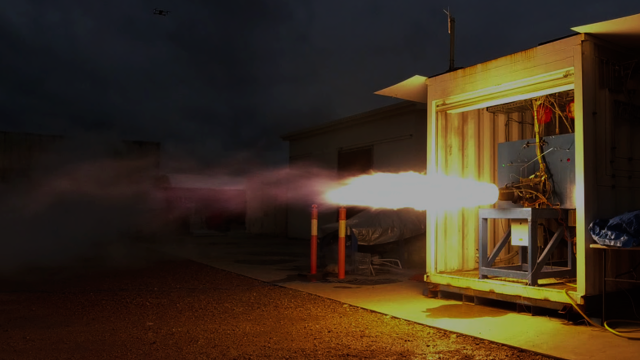Gilmour Space Technologies has unveiled a new 3D-printed liquid rocket engine set to power the third stage of its Eris rocket to orbit.
3D-printed, liquid, rocket AND space. All of those things sound very cool, but what exactly do they all mean? Let’s start with Eris.
Eris is a three-stage rocket being developed by Aussie company Gilmour Space for launching small satellites into low Earth orbits. Its maiden launch is targeted to be at the end of this year from the Bowen Orbital Spaceport in north Queensland, pending regulatory and other approvals, of course.
As for the 3D-printed liquid rocket? Take a look at this vid first:
The video is 3.35 minutes of fun. It shows a successful 190-second Mission Duty Cycle (or mission duration) test fire of its new regeneratively-cooled liquid rocket engine.
“The first and second stages of Eris will be powered by Sirius, our large hybrid rocket engine which is undergoing qualification tests,” Gilmour Space CEO Adam Gilmour explained.
“The third stage of Eris will be powered by this new 3D-printed liquid rocket engine, called Phoenix, which we developed to give us the extra performance needed to deliver substantially more payload to orbit.”
According to Gilmour Space, liquid rocket engines are used by most rocket companies around the world, including SpaceX, and are notoriously complex and expensive to develop.
“With this key test, we’re proud to say that Gilmour Space has demonstrated sovereign capability in not one but two rocket systems,” Gilmour added.
“The team has done exceptionally well to design, build and test this new engine in just over a year while also scaling our main hybrid rocket engine, building out the rest of the vehicle, and pushing to develop a new orbital launch site in Australia.”
Why is this such a big deal? Well, according to Gilmour Space, this short test was a major milestone. Really, the test was a demonstration of Australia’s sovereign launch capability. The company is developing Australian made rockets that it hopes will be capable of launching 300- to 4,000-kilogram satellites and payloads into low Earth and other orbits.
Gilmour Space has the goal of providing an affordable and reliable option for accessing space, and the CEO reckons this unique engine combination the company unveiled today will allow them to achieve just that. Space is also cool, and videos of rockets are even more cool.
Speaking of videos of rockets, in January, Gilmour Space shared another clip, after successfully undertaking a 110-kilonewton test fire of what they say is the most powerful rocket engine ever developed here.
